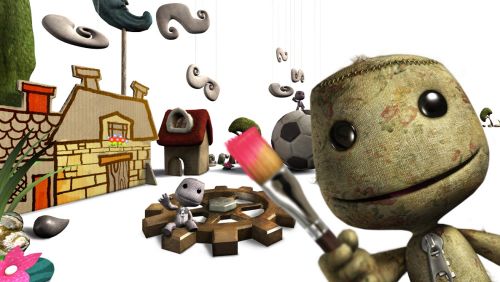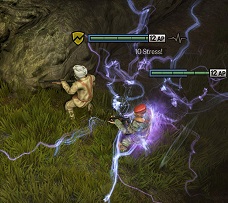Develop Day 2 Notes (Updated)
(Day 1 notes are here.) First off was Media Molecule’s key note. This was a great presentation with lots of fun and jokes, as befitting the Molecules (press links here and here). They showed the video demo that MM did (before they were called MM) to Sony to get a deal to develop what would become LBP. It is a remarkable demo and shows the raw gameplay and ethos that would evolve into LittleBigPlanet. I remember seeing this demo at Sony’s offices around the time we were pitching for Savage Moon and thinking a big ‘wow’ – it was and still is a great pitch video.

Then was the session I was part of for the Wellcome Trust. I’d say it was the most eclectic line-up at Develop this year from a neuroscientist (Demis Hassabis) to a new start-up doing 3D printing (Alice Taylor) to mainstream games development (from Jez Harris). I think it went well, at least the panel did a great job of talking about serious stuff like fun, death, sex and drugs. Paul Canty from Preloaded showed off their fascinating new game for Channel 4, that looks at death; The End. Demis also gave us some great insight from a scientific perspective on games development saying that games (and digital media) are rewiring our brains in some ways and that the data that can now be gathered from games and gaming can offer insights into not only how to make better (scarier!) games, but also into how our brain works. Notes on the Wellcome Trust’s funding for making games is here.
After lunch I joined the session on why content isn’t king. Speaker Ian Baverstock noted that in his opinion, large console focused development, while in its context is great, can also be a problem. It means the focus is no these and not what the speaker felt was the 2nd great age of the indie developer. Outside the console spaces there is a lot of interesting activity going on, however there is no great press, retail focus – but there is a lot of craft and a lot of innovation going on. The main change in this new age of the indie developer is that the relationship between the developer and the player is personal. The player is going to expect this and expect the developer to respond to them. The player is going to expect a direct line of discussion between them and the game (and the developer). A new place is content engineering – the ongoing input of player heuristics and how they feedback into changes in the game (something Demis alluded to our session). Games development has an advantage in this area (over other media forms) in that thinking about how the user interacts with technology is something we’ve (devs) been doing for some time now.
Next was ‘Innovation – A State of Mind‘. Core message is that we should be innovate in everything we do in game development. The HUD in the game Split Second is an example of this idea – in asking ‘why’ about everything we do in development. This applies much more to the smaller things within a game as much as the whole. Innovation is not about doing things differently for the sake of it, but because that is what works best – which is why you should ask ‘why’ and encourage experimentation – and failure. (Interestingly this was also noted several times by MM in the key note – that they went down a number of blind alleys before they found routes worth travelling all the way down!)
After a quick tea break, it was into the Brink writing session. I was interested to find out more about why they chose to use a post-global warming setting for the game. The key message here was that as the writer you are not writing the game’s story, as the player writes this, you are writing the story of the game. This was a great way to explain an important point. The speaker went on to note that there will be different narrative solutions for different players – where some skip the FMV and other don’t – neither are wrong. Multi-player games need to have a self-narrative function; indicate narrative and character in everything from design of uniforms to how they hold an item. In Brink there needed to be a reason why people were fighting, why did the protagonists not go their own way? The reasons why people why and don’t leave are down to isolation and scarcity. Its climate change (Interesting that the UN are considering Green Helmets to deal with the predicted coming of climate wars.) The buildings and environment needed to0 tell a story too and so they looked for ways to do this. This was done by referencing real world images such as Arcosanti and the slums of Brazil where the rich sit uncomfortably next to the poor….

Photos of this sort of imagery built the story of the environment. Interesting that they used ripomatics – videos for internal ‘selling’ of an idea build from cribbed film footage from elsewhere. (We’ve used them before too!) In Brink there are two faction, so 2 points of view and the player is encouraged to explore both. Really interesting that real science and stories from the headlines were used to generate the story in Brink – almost nothing was created for it, the ideas were all real world think re-adapted for the game.




